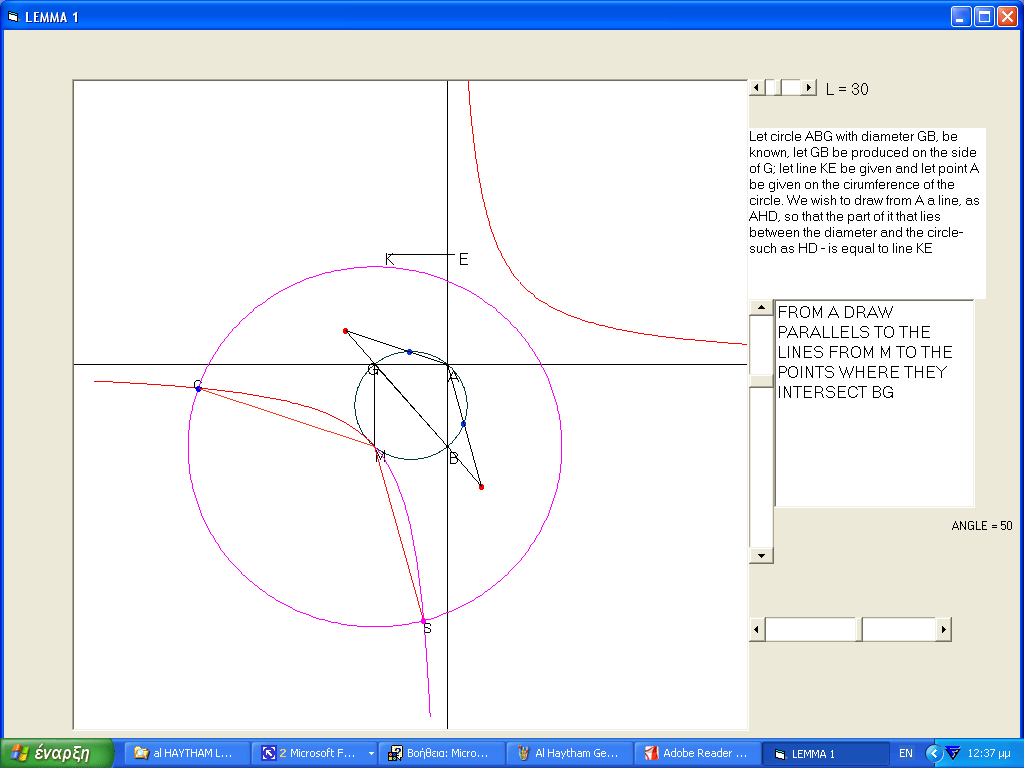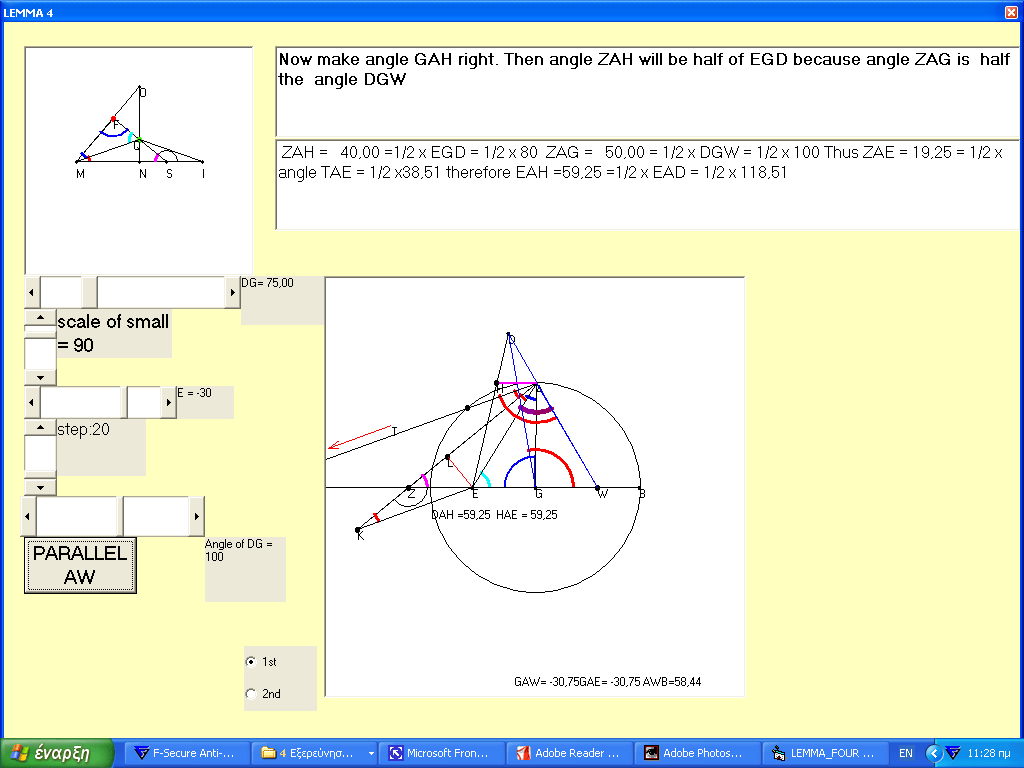AL HAYTHAM'S PROBLEM
We present here: 1st Lemma, 3rd Lemma, 4th Lemma Use of 4th Lemma to solve the problem, Huygens' solution, Numerical Solution to Al Haytham's
problem , Hyperbola, Ellipse
Al Haytham's
problem concerns the number of points that can join in a sphere 2 other points through refraction.
In the figure A: source, B:
eye, P: point of reflection. First cut: region of the circle contained in the
acute angle APB, opposite cut: the symmetric part
of the surface through C.
Al Haytham
proved that the highest number of points that can join A and B are four. His
proof is based on lemmas described in Sabra's work: Ibn Al Haytham's lemmas for solving "AlHazens'"
problem (Archive for the Exact Sciences Vol. 26 December 1982)
Software was developed to
have an interactive way of following the construction and the proof of the
lemmas.
To find the 4 points we use
the 4th lemma. This lemma in turn uses the 3rd lemma which in turn uses the 1s t or second.
t or second.
1st lemma: An excel file was developed: AL HAYTHAM'S FIRST LEMMA 
Let circle
ABG , with diameter GB, be known ; let
GB be produced the side of G; let line KE be given and let point
A be given on the circumference of the circle. We wish to draw from A a line, as AHD, so that the part of it that lies
between the diameter and the circle--such as HD--is equal to line KE.
The
second lemma is similar to the first
The 3rd
lemma can be downloaded from LEMMA_3.exe An Excel file fro
3rd Lemma INDEX FILES/LEMMA 3.xlsx There are instructions for al Haytham
Lemmas
Third lemma: 
Again, in
triangle ABG let angle B be right; let D be given on line BG;
and let the ratio of E to Z be known; we wish to draw from D a line like DTK
so that the ratio of TK to TG is as the ratio of E to Z.
be right; let D be given on line BG;
and let the ratio of E to Z be known; we wish to draw from D a line like DTK
so that the ratio of TK to TG is as the ratio of E to Z.
The 3rd
lemma uses the 1st lemma in constructing
The
proof is given in 9 steps.
Fourth Lemma: This Lemma is used to find the points on the
circle that solve the problem.
We present two software applications:
1) proof LEMMA 4 HAYTHAM.exe An excel file with 15 steps is
Proof of 4th Lemma INDEX FILES/LEMMA 4.xlsx
This is
a difficult proof with 20 steps. The picture shows the final step:
On the left side we see the
use of the 3rd lemma.
In the 1st text box we have
explanations of what is involved on each step.
On the 2nd text box we have
the calculations of several parameters that are connected with each step.
On the 20th step it appears
the button PARALLEL AW, which deals with a special case.
2) We use the lemma with the software application LEMMA 4
HAYTHAM.exe4TH LEMMA
An Excel file for
the use of the 4th Lemma INDEX FILES/USE OF LEMMA 4.xlsx
 This screen shows on the left side
the use of 3rd lemma.
This screen shows on the left side
the use of 3rd lemma. 

HUYGENS' SOLUTION TO AL HAYTHAM'S PROBLEM 1672 solution and 1665 solution
On the left is presentedHuygens
solution (which is
based on Analytic Geometry and use of Appolonius
circle based)
A
numerical solution can be found by
using EXCEL
Using the
EXCEL file we can see that the points that connect the rectangles the path of
light has an extremum (a maximum or a minimum)
(a maximum or a minimum)
We can compare
the circle with the case of parabola or ellipse

